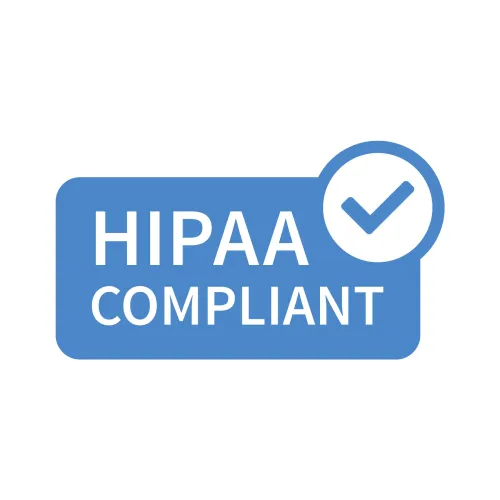Pediatric Coding Alert
Help PFSH Accuracy with Top-Notch Templates
Technology can help you track patients’ PFSH. Coders know that it’s vital to understand the ins and outs of past, family, and social history (PFSH) to calculate the correct level of evaluation and management (E/M) service. Now, check out these valuable PFSH tips from our coding experts to help you safeguard your practice. Standardize Your Documentation When you use them correctly, “templates with good prompts can help,” says Marcella Bucknam, CPC, CCS-P, COC, CCS, CPC-P, CPC-I, CCC, COBGC, manager of clinical compliance with PeaceHealth in Vancouver, Wash. “Of course, physicians should read over their documentation before they sign the note and make sure that it says what they mean, but if they think about their standard documentation, they can change a few words that would make a big difference.” Pointer: If your practice has good documentation templates, encourage your physicians to use them. If you don’t have any documentation templates, it might be time to start building some. The templates should help the physician to document the medically relevant information, not inflate the documentation to support the level of service. Work with Providers on PFSH Specifics “Honestly, working with the providers to educate them on some of the pitfalls before they occur is the best practice,” says Chelle Johnson, CPMA, CPC, CPCO, CPPM, CEMC, AAPC Fellow, staff services coordinator/billing/credentialing/auditing/coding at County of Stanislaus Health Services Agency in Modesto, Calif. “I tell my physicians it is like getting that immunization before you get sick. Prevention is half the battle.” Johnson goes on to give an example about how you can educate your provider. “If I do find records that should have been edited, it is a great live example to show the provider where the information could have been edited or adapted to that day’s visit,” says Johnson. Get PFSH, EHR/EMR on the Same Page Ashley Miller, CPC, CHONC, CPPM, remote outpatient coder at Altegra Health Los Angeles, Calif., acknowledges the close relationship electronic health records/electronic medical records (EHRs/EMRs) have with PFSH. “Having a cheat sheet for providers to document from when dictating their notes is very helpful; however, these days with the electronic medical record systems, that information [from the cheat sheet] can be pulled up and readily available for them to reference, making it easier to avoid those potential errors,” says Miller. Johnson echoes the importance of understanding the role EHRs/EMRs play in calculating PFSH. “In the world of the EHR/EMR, the less ‘clicks’ in the medical records the better, so make sure you are familiar with the system and the steps needed to rectify the problem before making the suggestion to the provider,” says Johnson. “It is the old adage of walking a mile in their shoes so that your recommendations are practical and cause the least amount of impact to their documentation time.” Use ‘Non-contributory’ Correctly Bucknam says the most common mistake she has seen concerning PFSH is misusing the word “non-contributory.” Expert definition: “Medicare and many other payers interpret ‘non-contributory’ to mean ‘I don’t need to ask about this, because it would not contribute to the patient’s care and, therefore, it doesn’t count for the level of service,’” says Bucknam. According to Bucknam, if the physician reviews the information and decides it will not contribute to the patient’s care, he should say “reviewed and non-contributory.” “This is usually interpreted to mean that it was asked, but would not affect patient care, and that will be used to support the level of care,” says Bucknam. Remember: ‘None’ Differs from ‘Reviewed and Non-Contributory’ Another common error people make with PFSH is documenting “none” when they actually mean “reviewed and non-contributory,” according to Bucknam. “When you think about it, ‘Past Medical History — None’ doesn’t mean anything. Of course, the patient has past medical history,” says Bucknam. “Allergies, immunizations, and childhood illnesses are all past medical history.” Bucknam further explains her point. “If they mean ‘reviewed and non-contributory,’ that is what they should say,” says Bucknam. “The same is true of family history and social history. They must have some, so it doesn’t make sense to say ‘negative’ or ‘none.’” Consider Visit Info Only when Tallying PFSH Johnson says many physicians mistakenly believe they have to document a patient’s entire medical history for an established patient office visit. They should document what is medically relevant and important for their medical decision-making. “We are seeing this more and more with the addition of the EHR/EMR systems, that providers are ‘bringing forward’ all PFSH and not just what is relevant to that day’s visit,” says Johnson. “… historical diagnoses are being pulled into the current record and not being updated or edited.” To pull information into the note without a medical need can unnecessarily bloat the note. This may appear to substantiate a level of service, but it really raises a red flag that the physician is documenting to justify the code, and not coding to the care level he’s providing to the patient. Johnson offers this example to illustrate her point: The physician pulls forward a previous diagnosis, such as strep throat or an ear infection, that is resolved and has no bearing on the day’s visit (e.g. a sprained ankle). The physician should review and edit the information he pulled forward to match it with the patient’s current health status and chief complaint(s). Do this: To get a firmer grip on this coding concept, Kent Moore, senior strategist for physician payment at the American Academy of Family Physicians in Kansas, recommends checking out Section 30.6.1(A) of chapter 12 of the Medicare Claims Processing Manual. The manual states, in part: “Medical necessity of a service is the overarching criterion for payment in addition to the individual requirements of a CPT® code. It would not be medically necessary or appropriate to bill a higher level of evaluation and management service when a lower level of service is warranted. Thevolume of documentation should not be the primary influence upon which a specific level of service is billed.” You can find this resource online at: https://www.cms.gov/Regulations-and-Guidance/Guidance/Manuals/Downloads/clm104c12.pdf.
Related Articles
Pediatric Coding Alert
- E/M Coding:
Use Different Codes for Some Peds Critical Care Patients
Hint: Observe the 71-month threshold for 99291, 99292. When a pediatrician has to provide critical [...] - Coding Definitions:
Heed These 'Critical' Patient Care Parameters
Peds patients must still meet critical illness, injury standards. When you’re reporting critical care services [...] - Modifiers:
Grab Deserved Dollars on Multiple Excisions
You’ll use modifiers 59, 51—depending on payer preference. If a patient reports for removal of [...] - E/M Coding:
Help PFSH Accuracy with Top-Notch Templates
Technology can help you track patients’ PFSH. Coders know that it’s vital to understand the [...] - You Be the Coder:
Reporting Z Code for Screenings
Question: A patient presented to our practice after he failed a school hearing test, but our [...] - Reader Question:
Tread Carefully on Mixed CP Dx
Question: Our physician treated a patient in the observation unit of the local hospital for complications [...] - Reader Question:
Educate Physicians on 'Automatic' Coding Dangers
Question: I am having an issue with one of our physicians who wants to report [...]




